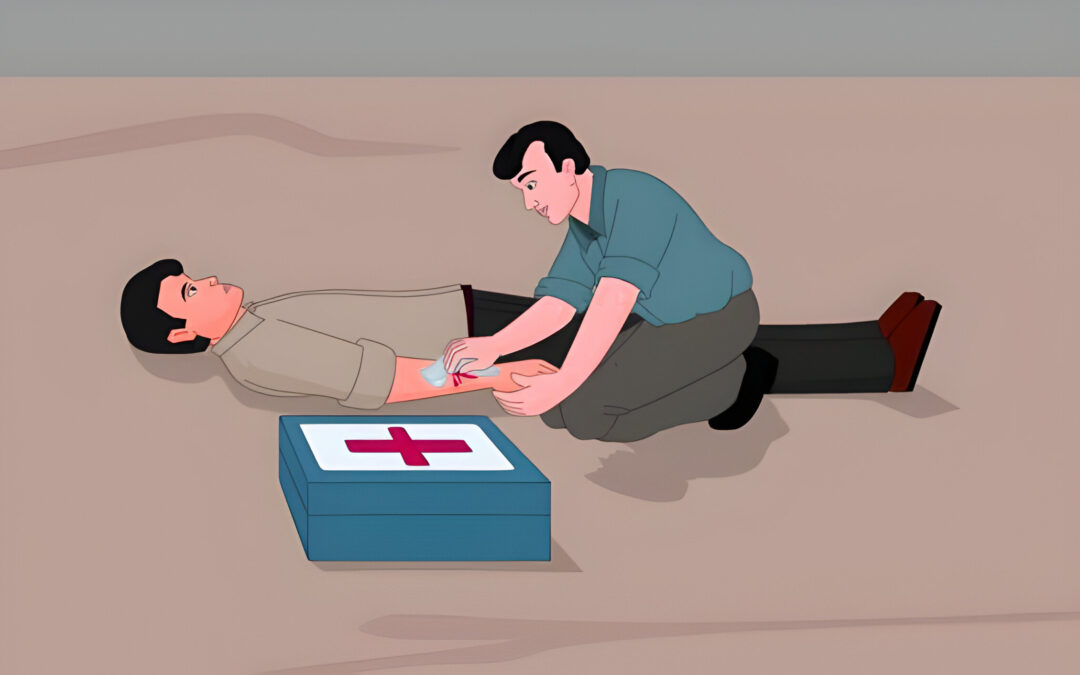First Aid Courses: From Basics to Advanced Techniques
Introduction
First aid courses are vital for equipping individuals with the skills needed to handle emergencies effectively. These courses range from basic first aid skills to advanced techniques, catering to various needs and settings. Understanding the spectrum of first aid training helps individuals choose the right course for their needs and ensures they are prepared to respond to a wide range of medical emergencies. First Aid Courses: From Basics to Advanced Techniques
Basic First Aid Courses
1. Overview of Basic First Aid
Basic first aid courses provide foundational knowledge and skills necessary to address common injuries and medical situations. These courses cover essential techniques that everyone should know, whether in a home, community, or workplace setting. They focus on immediate care to stabilize an individual until professional help arrives.
2. Key Skills Covered
Basic first aid training includes:
Wound Care: Techniques for cleaning and dressing cuts, scrapes, and minor injuries to prevent infection and promote healing.
Burn Treatment: Methods for treating different types of burns, including minor and severe burns, to alleviate pain and prevent complications.
Fracture Management: Basic immobilization techniques for suspected fractures or sprains to prevent further injury.
Choking Relief: Procedures for relieving choking in adults, children, and infants, including the Heimlich maneuver and back blows.
CPR (Cardiopulmonary Resuscitation): Basic CPR techniques to restore breathing and circulation in individuals experiencing cardiac arrest.
3. Benefits of Basic First Aid Training
Basic first aid courses are beneficial for:
Everyday Situations: Providing immediate care for common injuries and medical issues that can occur in daily life.
Workplace Safety: Enhancing safety and preparedness in various work environments.
Family and Community: Offering critical skills for parents, caregivers, and community members to manage emergencies effectively.

First Aid Courses: From Basics to Advanced Techniques
Intermediate First Aid Courses
1. Expanding on Basic Skills
Intermediate first aid courses build on the foundational skills learned in basic courses. They delve deeper into more complex situations and provide additional techniques for managing a wider range of medical emergencies. These courses are suitable for those who need more comprehensive training or wish to advance their skills.
2. Key Skills Covered
Intermediate first aid training includes:
Advanced Wound Care: Techniques for treating more severe wounds, including wound cleaning, suturing basics, and managing bleeding.
Shock Management: Understanding and managing different types of shock, including symptoms and treatment strategies to stabilize the patient.
Medical Emergencies: Recognition and initial management of common medical emergencies such as diabetic emergencies, seizures, and allergic reactions.
Transporting Injured Individuals: Safe methods for moving and transporting injured individuals, including the use of splints and stretchers.
3. Benefits of Intermediate First Aid Training
Intermediate courses provide:
Enhanced Skills: More detailed techniques for managing severe injuries and medical conditions.
Professional Use: Ideal for individuals in roles that require a higher level of first aid knowledge, such as workplace safety officers and community volunteers.
Increased Confidence: Improved ability to handle a broader range of emergency situations effectively.
Advanced First Aid Courses
1. Comprehensive and Specialized Training
Advanced first aid courses offer in-depth training and specialized techniques for handling complex and high-risk medical emergencies. These courses are designed for professionals and individuals who need advanced skills beyond basic and intermediate training.
2. Key Skills Covered
Advanced first aid training includes:
Advanced Trauma Management: Techniques for managing severe trauma, including severe bleeding, multiple injuries, and complex fracture management.
Advanced Cardiac Life Support (ACLS): In-depth CPR techniques, including advanced airway management, defibrillation, and pharmacological interventions.
Emergency Medical Response: Handling critical medical situations such as heart attacks, strokes, and respiratory emergencies with advanced procedures and equipment.
Specialized Scenarios: Training for specific environments or roles, such as wilderness first aid, industrial safety, or first aid in childcare settings.
3. Benefits of Advanced First Aid Training
Advanced courses offer:
Expert-Level Skills: High-level techniques and knowledge for managing severe and complex medical emergencies.
Professional Requirements: Essential for healthcare professionals, emergency responders, and those in specialized roles requiring advanced first aid capabilities.
Increased Preparedness: Enhanced ability to handle critical situations effectively and make informed decisions under pressure.
Choosing the Right First Aid Course
1. Assessing Your Needs
Selecting the appropriate first aid course depends on your specific needs and goals. Consider factors such as the type of environment you are in (home, workplace, community), your role, and any regulatory requirements that may apply.
2. Course Accreditation and Providers
Ensure that the course is accredited and offered by a reputable provider. Accredited courses adhere to established standards and guidelines, ensuring that the training is comprehensive and recognized by relevant authorities.
3. Course Format and Flexibility
First aid courses are available in various formats, including in-person, online, and blended options. Choose a format that fits your schedule and learning preferences. In-person courses offer hands-on practice, while online options provide flexibility for self-paced learning.
Conclusion
First aid courses range from basic to advanced levels, each offering unique skills and knowledge for managing different types of emergencies. Basic courses provide foundational skills, intermediate courses expand on those skills, and advanced courses offer specialized training for complex scenarios. By choosing the right course based on your needs and goals, you can ensure that you are well-prepared to handle medical emergencies effectively and confidently. Investing in first aid training not only enhances your ability to respond to emergencies but also contributes to a safer and more prepared environment for yourself and others.

